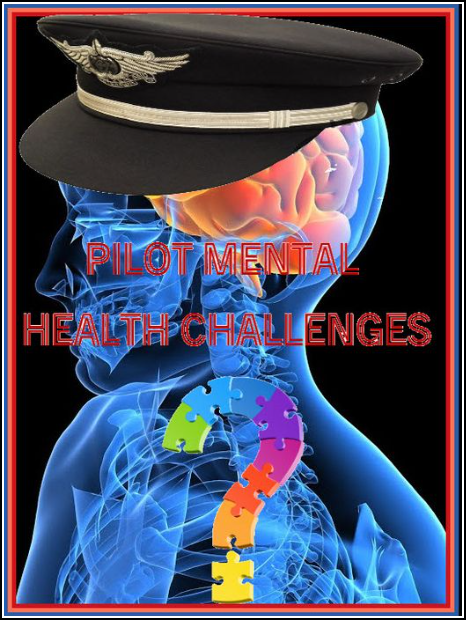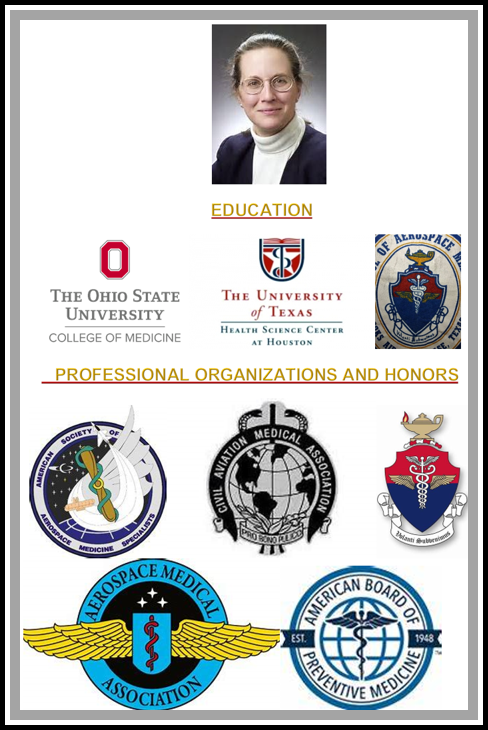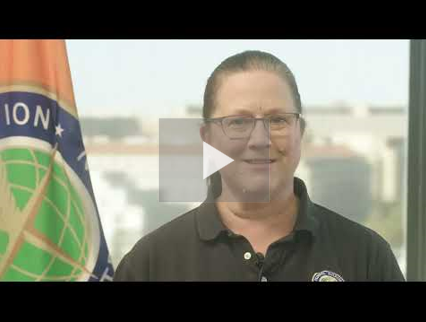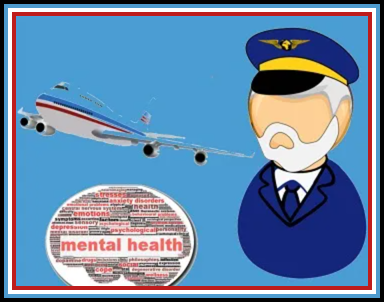DIFFERING VIEWS ABOUT FAA MENTAL HEALTH POLICY

The NTSB and Congress have expressed dissatisfaction with the FAA’s policies, practices, and procedures on PILOT MENTAL HEALTH. Their strong expressions suggest that something is deficient in the Federal Air Surgeon’s efforts to address this complex psychological issue. The German Wings’ suicide crash #Germanwings highlighted #pilot #mentalhealthmatters #FAA, #EASA and others proposed solutions. Have any been implemented? LINK
The professionals who set the mental health policy faced a HOBBESIAN CHOICE—quickly encourage pilots to seek help and preserve their flying rights or more carefully move to new more enlightened standards. The first had some risk of some pilots who still were at risk would fly. Haste in creating insufficient or DIFFICULT-to-APPLY standards might result in pilots with potential problems reentering the cockpit. A slower path to a new set of guidelines would frustrate individuals with potential problems.
Here is a brief outline of the complexities, ambiguities, temporal and subjective aspects of a psychiatric prognosis of a pilot with one of the most difficult conditions:
The precision of evaluating psychosis, bipolar disorder, and certain personality disorders:
[apologies for the bad organization- Word Press refused to accept the original numbering..]
- Psychosis: Assessment Instruments:
- Clinical Interviews.
- Structured Interviews.
- Observations.
- Neuropsychological Tests.
- Functional Assessment.
- Challenges:
- Subjectivity:
- Fluctuations:
- Comorbidity:.
- Bipolar Disorder:
- Assessment Instruments:
- Mood Rating Scales.
- Life Charting.
- Clinical Interviews.
- Self-Report Measures.
- Challenges:
- Heterogeneity.
- Diagnostic Overlap.
- Stigma.
- Assessment Instruments:
- Personality Disorders:
- Assessment Instruments:
- Structured Interviews.
- Personality Inventories.
- Clinical Judgment.
- Collateral Information.
- Challenges:
- Self-Insight.
- Comorbidity.
- Dimensionality.
- Assessment Instruments:
In summary, precision in psychiatric evaluation involves a holistic approach, combining interviews, observations, and standardized measures. Clinicians must navigate complexities while striving for accurate diagnoses and personalized treatment plans.
Below are the pro and con views of the FAA’s current position:
FIRST is a review of Dr. Northrup’s steps in response to this challenge. SECOND is NTSB Chair Homendy’s remarks. THIRD is a letter from the House Aviation leadership.
Please read all three and include your opinion in the COMMENTS section below:
————————————————
In 2017 and thereafter, Pilot mental health has been a frequent topic here. The pace and tone of these posts picked up soon after Dr. Susan E. Northrup was named the Federal Air Surgeon for the U.S. Federal Aviation Administration. Under her leadership,

important advances in the FAA’s policies and procedures applicable to the members of the cockpit.
- PILOT MENTAL HEALTH (2).docx 11.03.2020
- A tragic accident asks AVIATION the question-what is being done for Pilot Mental Health (1).docx 12/20/2021.
- FLYING adds knowledge to the issue of Pilot Mental Health THANKS (1).docx 06/07/2022.
- Insights on pilot mental health from one who knows 12/20/22.
- Senator asks in 2015 for OIG for evaluation of FAA Pilot Mental Health Policy; 2023 Report is UNDERWHELMING 07/19/23.#FAA #FEDERALAIRSURGEON #DOT #OIG #pilotmentalhealth
- Alaska jump seat Pilot Incident suggests that Pilot Peer Groups for Mental Health should be MANDATORY to detect this insidious safety risk. 10/23/23
- Federal Air Surgeon’s positive approach to ATP mental health 05/15/23
The Federal Air Surgeon took to You Tube to personally explain the FAA’s position on PILOT MENTAL HEALTH CLICK ON THIS LINK–
https://www.youtube.com/embed/2DC0gyAOHSQ?feature=oembed

ONE QUOTE FROM HER 3-MINUTE TALK.

HOW THE FAA IS REDUCING THE STIGMA OF MENTAL HEALTH, HELPING PILOTS RECEIVE CARE
- The FAA encourages pilots to seek help if they have a mental health condition SINCE MOST, IF TREATED, DO NOT DISQUALIFY A PILOT FROM FLYING.
- However, certain medical conditions such as a psychosis, bipolar disorder and some types of personality disorder automatically disqualify a pilot from obtaining an FAA medical certificate.
- Former FAA Administrator Steve Dickson addressed pilot mental health at the University of North Dakota Mental Health Summit.
- During the last several years, the FAA has invested a number of resources to ELIMINATE THE STIGMA AROUND MENTAL HEALTH IN THE AVIATION COMMUNITY SO PILOTS SEEK TREATMENT. This includes:
- Increased mental health training for medical examiners
- Supported industry-wide research and clinical studies on pilot mental health
- Hired ADDITIONAL MENTAL HEALTH PROFESSIONALS TO EXPAND IN-HOUSE EXPERTISE AND TO DECREASE WAIT TIMES FOR RETURN-TO-FLY DECISIONS
- Completed clinical research and AMENDED POLICY TO DECREASE THE FREQUENCY OF COGNITIVE TESTING IN PILOTS USING ANTIDEPRESSANT MEDICATIONS
- Increased outreach to pilot groups to educate them on the resources available
- The FAA developed a plan to support individuals on special issuance for substance dependence. The plan allows the agency to provide long-term support for pilots in recovery.
————————————
NTSB chair warns ‘culture of silence’ around mental health is affecting safety

“NO ONE, NO ONE, SHOULD HAVE TO THINK TWICE ABOUT THEIR JOB BEFORE SEEKING HELP AND YET HERE WE ARE TODAY BECAUSE THAT’S NOT CURRENTLY THE CASE IN AVIATION,” NTSB Chair Jennifer Homendy said at the opening of a daylong summit exploring the issue, explaining that current Federal Aviation Administration rules cause people to either lie or not seek help.
“In aviation, you are in effect punished for following the rules around disclosure,” she said.
——————————————-
Lawmakers Urge FAA To Ease Path to Mental Health Care
In a joint letter, lawmakers urged FAA to remove barriers discouraging mental health care
Experts agree that the FAA system discourages reporting of mental health issues.

By KERRY LYNCH • Editor, AIN monthly magazine
February 12, 2024
U.S. House Transportation and Infrastructure (T&I) Committee and aviation subcommittee members urged FAA Administrator Michael Whitaker to take “DECISIVE ACTIONS” that would encourage aviation professionals to seek mental healthcare.
“We are concerned about the FAA’s approach to ensuring aviation professionals can obtain mental healthcare in a timely and efficient manner,” the lawmakers said in a joint letter sent last week. “It is clear to us that talented aviation professionals—our constituents—often suffer in silence because of the fear that medical evaluation, diagnosis, or treatment, could potentially prolong their return to work, or even prevent them from pursuing their aviation careers.”
While medical standards are designed to ensure safety in the National Airspace System, “they cannot be so cumbersome or potentially punitive as to prevent healthy aviation professionals from having the ability to work,” said the letter signed by T&I Chair Sam Graves (R-Missouri) and Ranking Member Rick Larsen (D-Washington), along with subcommittee Chair Garret Graves (R-Louisiana) and Ranking Member Steve Cohen (D-Tennessee).
They SUPPORTED THE FAA’S STEPS TO CREATE A MENTAL HEALTH AND AVIATION MEDICAL CLEARANCES RULEMAKING COMMITTEE, but stressed that “valuable time cannot be wasted by simply restating what previous findings have already been uncovered.”
The lawmakers said the FAA needs to move on efforts that reduce the stigma around mental health care, remove barriers without jeopardizing safety standards, reduce wait times on special issuance medicals, and strengthen the trust of the workforce.
NBAA welcomed the call for action. “This issue is a priority for business aviation, and we know it’s a priority for FAA and National Transportation Safety Board (NTSB) because it’s vital to aviation safety,” said NBAA president and CEO. “We will continue to work with the agencies, Congress, and others to ensure those in our industry can get mental health care without concerns over whether doing so will impact their employment.”
The issue has been of such concern that the NTSB in December held a day-long summit to probe into the barriers discouraging the aviation workforce from seeking and reporting mental healthcare. Meanwhile, the topic will be discussed at a United States Helicopter Safety Team (USHST) all-hands meeting on the eve of Heli-Expo on February 26. USHST plans to unveil a Peer Pilot Program during that meeting to offer resources to pilots.

———————————————————————————————————–